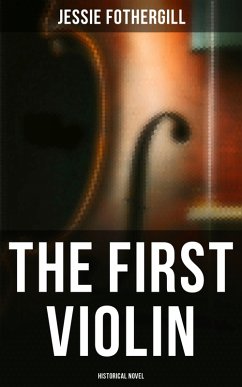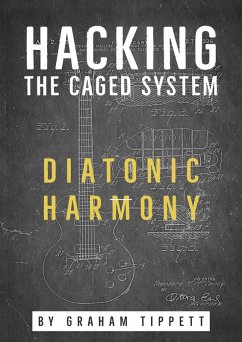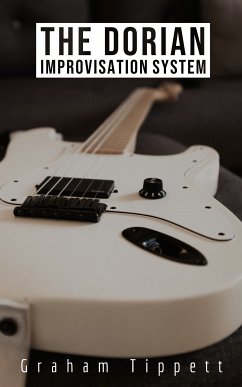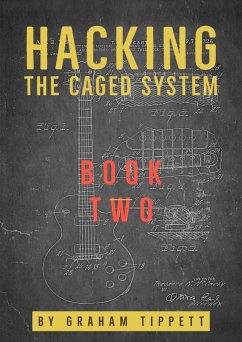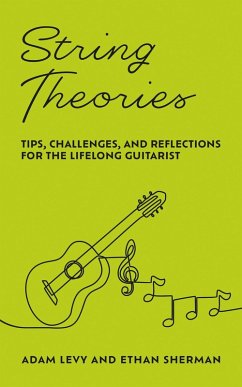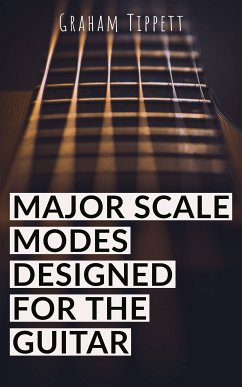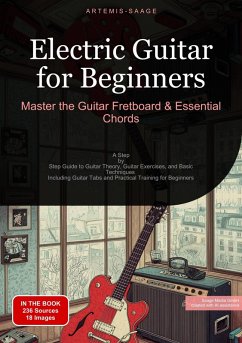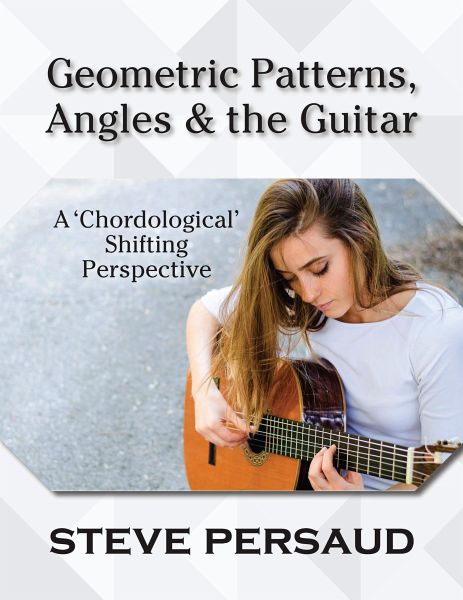
Geometric Patterns, Angles and the Guitar (eBook, ePUB)
A 'Chordological' Shifting Perspective

PAYBACK Punkte
0 °P sammeln!
A Novel Approach to Learning Guitar Chord Progressions This treatise seeks to encourage guitarists of all levels to find their voice by experimenting and creating chordal ideas by playing notes on any part of the fingerboard to come up with their own chord shapes and patterns and not necessarily familiar, geometric shapes. These chord progressions can express an emotion or tone, be it sad, happy, humorous, mysterious, and the next step is to use an online chord app (if needed) to determine the names of the chords that were created. Guitarists who compose instrumental pieces will not be limited...
A Novel Approach to Learning Guitar Chord Progressions This treatise seeks to encourage guitarists of all levels to find their voice by experimenting and creating chordal ideas by playing notes on any part of the fingerboard to come up with their own chord shapes and patterns and not necessarily familiar, geometric shapes. These chord progressions can express an emotion or tone, be it sad, happy, humorous, mysterious, and the next step is to use an online chord app (if needed) to determine the names of the chords that were created. Guitarists who compose instrumental pieces will not be limited by conventional chord shapes but can come up with unusual chordal ideas that highlight their creative and compositional abilities against a background of shapes and patterns. "This is interesting! I am an intermediate-level guitar player, and I am only familiar with moving basic chord shapes vertically, but I do think it would have been very useful if I had been familiar with these chord shapes, and this concept of moving them horizontally, earlier in my learning process." -- Dennis Dezentje, The Netherlands "I have read this book repeatedly and found it quite interesting. It did not take long to recognize the genius it unleashed. As I explored Persaud's Geometric Patterns, Angles and the Guitar and applied its principles, I most certainly wished I had had access to it much earlier during my exposure to advanced guitar methods." -- Hezekiah Dean, District Superintendent of Education (retired), Bahamas "This method can revolutionize the way a student is taught to play a musical instrument. Many students have problems processing words. For many of them, learning through visualizing shapes and the pattern of movements will be easier because the concept is more concrete. Geometric Patterns, Angles and the Guitar will have great success with both tactile and visual learners." -- Mary Moncur Grey, B.A., Dip Ed., MBA "The author provides an interesting geometrical concept, something that the mathematically oriented guitarist will certainly appreciate. Geometric Patterns, Angles and the Guitar will open up a less-trodden path for guitarists, allowing them to explore chord construction, sounds and tonalities. Welcome to music creativity beyond basic music theory." --Rehman Abdul, M.S., P. Eng., Geotechnical Engineer
Dieser Download kann aus rechtlichen Gründen nur mit Rechnungsadresse in A, B, BG, CY, CZ, D, DK, EW, E, FIN, F, GR, H, IRL, I, LT, L, LR, M, NL, PL, P, R, S, SLO, SK ausgeliefert werden.





